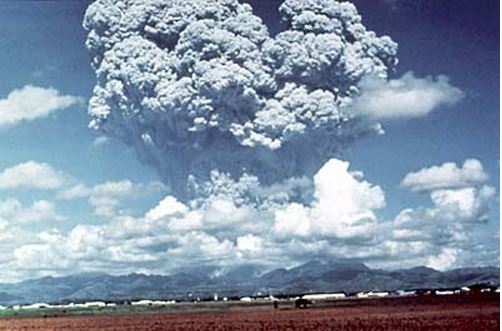A climate expert was alarmed when a mysterious organization claiming to be part of the CIA asked him whether he would be able to identify cases of weaponized weather attempts against the United States.
Weaponized weather, or weather warfare, is the use of weather modification techniques for military purposes.
Professor Alan Robock, who works at the Department of Environmental Sciences at Rutgers University, New Jersey, said he suspected that the two men from this secret organization who had approached him were really trying to find out whether they themselves might be able to secretly interfere with the climate of another nation, and get away with it.

Prof. Robock was alarmed at the prospect of government agencies considering weaponized weather. (Image: Rutgers University)
He and other scientists were discussing the US National Research Council report published this week published by The National Academies.
Prof. Robock’s research involves investigating the potential harms and benefits of using stratospheric particles to simulate the effects volcanic eruptions may have on climate change.
In a debate on geoengineering to combat climate change at the annual meeting of the American Association for the Advancement of Science (AAAS) in San Jose, California, Prof. Robock said:
“I got a phone call from two men who said we work as consultants for the CIA and we’d like to know if some other country was controlling our climate, would we know about it?”
“I told them, after thinking a little bit, that we probably would because if you put enough material in the atmosphere to reflect sunlight we would be able to detect it and see the equipment that was putting it up there.”
“At the same time I thought they were probably also interested in if we could control somebody else’s climate, could they detect it?”

The 1991 Mount Pinatubo eruption was the second largest in the 20th century. Afterwards, the Earth’s temperature cooled for about two years (Image: US Geological Survey)
When asked how the inquiry made him feel, he said it scared him. “”I’d learned of lots of other things the CIA had done that haven’t followed the rules and I thought that wasn’t how I wanted my tax money spent. I think this research has to be in the open and international so there isn’t any question of it being used for hostile purposes,” Prof. Robock added.
One way to use geoengineering technology to combat global warming is to scatter particles of sulphur in the upper atmosphere. They would re-direct sunlight back into space. If less sunlight enters our atmosphere, land and seas the global temperature would drop.
Seeding the oceans with iron is another possibility. This would encourage the spread of algae, which eat up carbon, creating reflective areas on the surface of the Earth.
Scientists do not know, however, what the undesirable side effects of these strategies could be.
Studying volcanic eruptions as part of climate change research
Climate change researchers seeking ways to mitigate global warming believe we should be ready to rapidly deploy scientific instruments to major volcanic eruptions.
The data these instruments could gather in high atmosphere would help determine whether some geoengineering solutions are worth pursuing.
Prof. Robock says eruptions would have to be on the scale of the one at Mount Pinatubo in 1991 which spewed 20 million tonnes of sulfur dioxide into the sky above the Philippines and cooled the whole planet for a couple of years.
The resulting sulfuric acid droplets that formed on contact with atmospheric moisture reflected the sunlight back into space, thus preventing that radiation from warming the surface of the Earth.
The problem today is that nobody has any clear idea how mimicking such a strategy would play out. That is why Prof. Robock would like to organize a coordinated investigation of the next major volcanic eruption to gather additional data.
In an interview with BBC News, Prof. Robock said:
“We’d like to be able to see how this sulphur dioxide cloud evolves from gas into particles and how the particles grow.”
“If the particles are too big then they’ll fall out much more rapidly and you’d have to replenish them much more rapidly, if you’re interested in doing geoengineering. And so we’d like to understand the processes in the formation of these droplets.”

